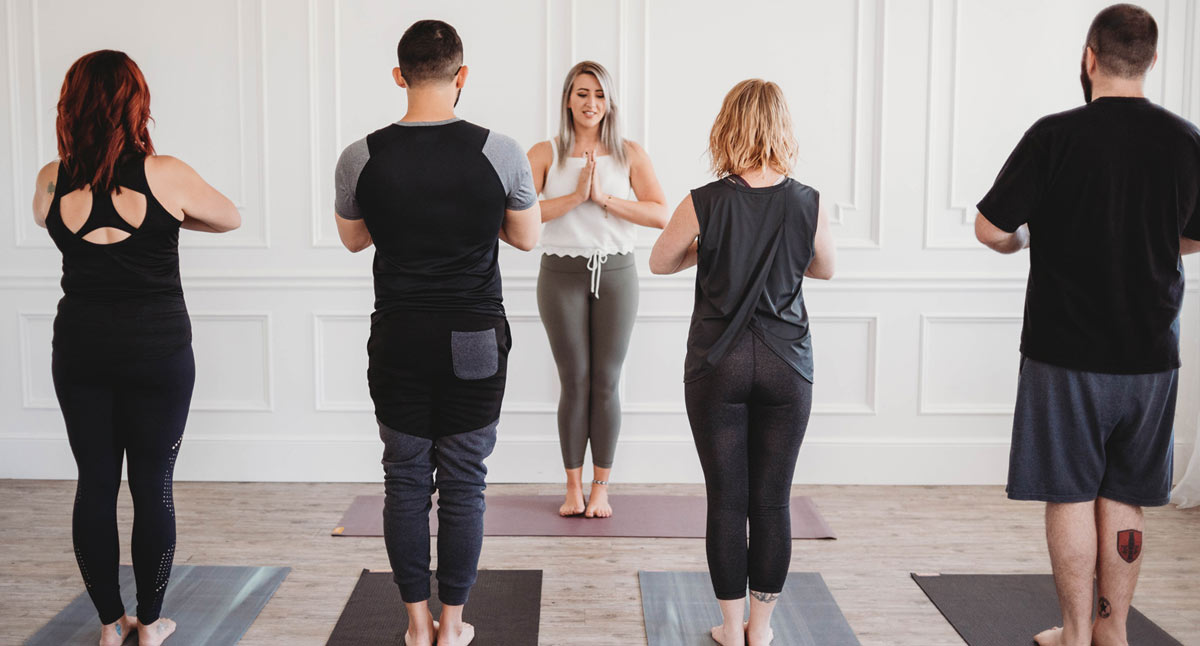
Most who practice yoga these days have heard of the word ahimsa. We might have even read some of the in-depth literature on it, or practiced incorporating the idea of ahimsa—non-harming—into our lives. Translated as “dynamic peacefulness” by Alistair Shearer, it is arguable that ahimsa is the foundation of the entire practice.
Ahimsa is the first of the yamas, the first of yoga’s Eight Limbs. In the yoga tradition, the yamas (ethical precepts), along with the niyamas (skillful living practices) are the first yoga practices children learned—before asana. With a foundation of non-harming, budding yogis and yoginis could approach asana practice with the intention of calming and caring for the body rather than conquering it by force.
In the West, pretty much everyone starts their yogic journey with physical practice. So we may not yet be familiar with the yamas and niyamas. But it’s never too late to incorporate them into our lives, both on and off the yoga mat. With the rise in yoga-related injuries over the past 20 years, practicing ahimsa in asana seems especially pertinent. As we age—which we all are!—practicing ahimsa with our bodies becomes even more important.
Be Here Now to Practice Ahimsa
Many, if not most, of us begin our practice with the notion that yoga will improve our lives in some way. We hope for weight loss, creating healthier habits, increasing flexibility, improving sleep, alleviating back pain, or calming and integrating our bodies and minds. There are lots of reasons, but mostly they have to do with changing the way we are.
What if we shifted our intention to simply taking the time to be with ourselves in a nurturing, non-judgmental way? How would it be if we decided just to be present—without an agenda—with our bodies and minds as they are? What if we set aside the need to “improve” our poses and ourselves, and simply allowed our asana experiences to unfold moment by moment?
While it sounds simple, this is not easy. Most of us come to practice with profoundly conditioned beliefs about our own insufficiency. These beliefs cause us to place unrealistic demands on our practice. They cause us to compare our practice to that of others. This is a completely irrelevant and potentially injurious habit because it makes us think we need to conform to standards that our bodies and minds may not be designed to achieve. We’re all different, after all! The “shoulds” we inflict on ourselves make enjoying our practice in the moment impossible. As a colleague of mine says, “Don’t should on yourself.”
It’s helpful to remember that we all come to yoga with different genetics and histories. These create superficial differences among us, but essentially, we are all capable of sharing the peace of being present with our bodies and minds just as they are. This is the essence of yoga practice.
What’s Happening in Your Body?
Once you shift your intention to being present in your body instead of striving for some future pose that’s somehow “better” than the one you’re practicing, you may start to notice some of your habits of forceful practice.
For example, notice how you’re using your hands and arms. Our arms are our instruments of doing. We use our arms and hands to accomplish things in our lives. Noting the disposition of our arms is especially helpful in poses such as seated forward bends and twists where our arms are potentially involved in moving us further into a pose. Notice: Are your shoulders and arms tense? Are your arms inflicting the pose on your body? Can you instead let your arms support your asana without tensing them or using them to force your body into your idea of a “better” position?
Breathe Into Ahimsa
The simplest cue of all for practicing ahimsa on the mat is to give your breath primacy—always. If your breath is shallow, labored, fast or uncomfortable in any way in an asana, you are probably pushing yourself too far. When an asana restricts breathing, it is not life supporting. If the breath is a carrier of prana, asana that restricts its flow is depleting rather than regenerating your energy. It is therefore an act of harming. Don’t do it! Back off to the point where your breath can flow freely.
The Eight Limbs of Yoga are an elegant framework in which to grow your practice. As the first yama, ahimsa is the foundation of the practice. We can practice in daily life through our relationships and choices, and on our mats by shifting our intentions for practice. Let go of your ideas about what practice “should” be and relax into what it actually is.
If you’re interested in learning more about how to practice the Eight Limbs on and off your mat, you can pick up my book, Mindful Yoga, Mindful Life: A Guide for Everyday Practice (Rodmell Press, 2007). The Eight Limbs are a passion of mine and the book delves more deeply into them than I can in a blog post!
